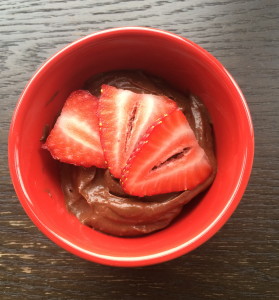Hey, happy Saturday! Did you know it’s National Cereal Day? Me neither, until recently. Man, there are so many random food holidays. A quick Google search just told me that my birthday happens to fall on National Mousse Day. Maybe I’ll have to start doing birthday mousse instead of cake. For example, I could make this and be a totally happy (if old) camper. 
Anyway, back to cereal.
It’s one of the most of popular breakfasts for kids and adults alike. It’s hard to beat the convenience of pouring milk and cereal into a bowl and calling it a meal. Though it started off as a saving-grace health food of sorts back in the 1800’s when the American diet was lacking in many key nutrients, cold cereal has become incredibly fraught with controversy.
As a dietitian, I get a lot of questions about cereal. Which is the right kind? What should I look for when I go shopping? What do you think about x in cereal?
Many commercial brands are fortified with vitamins and minerals, which can bring some peace of mind to parents of picky eaters, but at the same time, this fortification may not be appropriate for everyone. It’s important to know what your needs are and to consider that if you’re eating a big bowl of frosted whatever the f*** in the morning, popping a multivitamin on the side may be excessive.
I’m not even going to delve into the creepy-crawly world of GMO here because that could be an entire blog post on its own. I do find it disconcerting that current government guidelines dictate that food companies do not have to disclose the use of GMOs. That said, because they’re so prevalent in our food supply, I think that in your day-to-day life, it’s important to pick your battles. If that means picking all the battles, go for it. However, if you feel more equipped to focus on avoiding GMOs in just a few types of foods (at least to start), I feel that’s okay too. I know that not everyone will agree with me on that, but as my mother likes to say, opinions are like assholes…
My personal pet peeve is sugar in cereals—especially in ones targeted towards kids (and all those kids-at-heart of the online dating world who eat cereal for dinner). Consider the source obviously, but in my humble “everyone has one” opinion, it seems a lot of us have been brainwashed to crave sweetness at breakfast. Biochemically speaking, front-loading the day with sugar does not do the body any favors in terms of stable energy or blood sugar control. Most sugary cereals also tend to be low in fiber, and without that fiber to slow digestion, a sugar crash is usually on the menu just a couple hours later. I don’t know which is worse: a hangry kid or a hangry adult, but a lower-sugar breakfast (one that preferably has some fiber and protein) can help ward off that kind of meltdown.
 That said, cereal is always going to be a convenient breakfast option that can be healthy. I encourage clients to look for cereal with whole grains among the first ingredients and to choose varieties with 4 grams or more of fiber and less than 5 grams of sugar.
That said, cereal is always going to be a convenient breakfast option that can be healthy. I encourage clients to look for cereal with whole grains among the first ingredients and to choose varieties with 4 grams or more of fiber and less than 5 grams of sugar.
One super-quick way to cut sugar intake at breakfast is to go halfsies between a sugary cereal and a non-sugary one. Take a big airtight container and pour both types of cereal in and shake well. Now, whenever you pour a bowl, you get a little of both. This is especially helpful for those who’ve been eating sugary cereal and are having a hard time transitioning. It’s also one approach to weaning kids off the sweet stuff. Over time, you can play with the ratios to include less and less of the sugary cereal—Lucky Charms as a garnish instead of the main event, if you will.
A few months ago, I did a post for General Mills on how to add sweetness to a bowl of oatmeal without adding sugar, and you can totally do the same thing for a bowl of cold cereal. If you want to up the fiber content to a low-fiber cereal, consider adding ground flax, chia seeds, nuts, or fresh fruit. As for the milk, go for organic (from grass-fed cows would be even better) and consider 1% intend of skim—that little bit of fat will help your body absorb some of the nutrients better. If you’re going non-dairy, consider homemade nut and seed milks and seek out store-bought varieties without added sweeteners or thickening agents.
Are you a cereal lover? Hater? What’s your favorite way to make breakfast more filling?